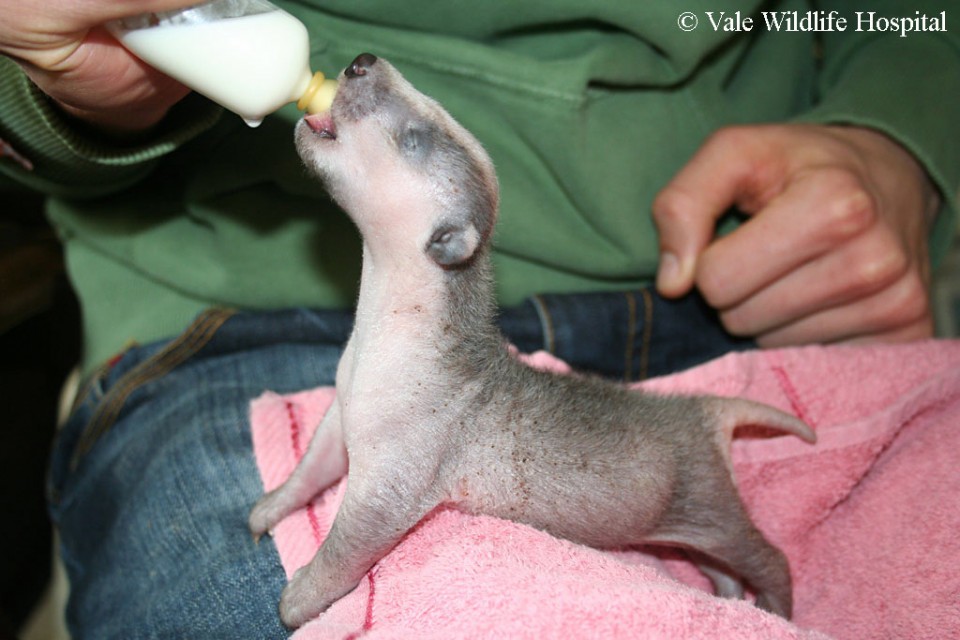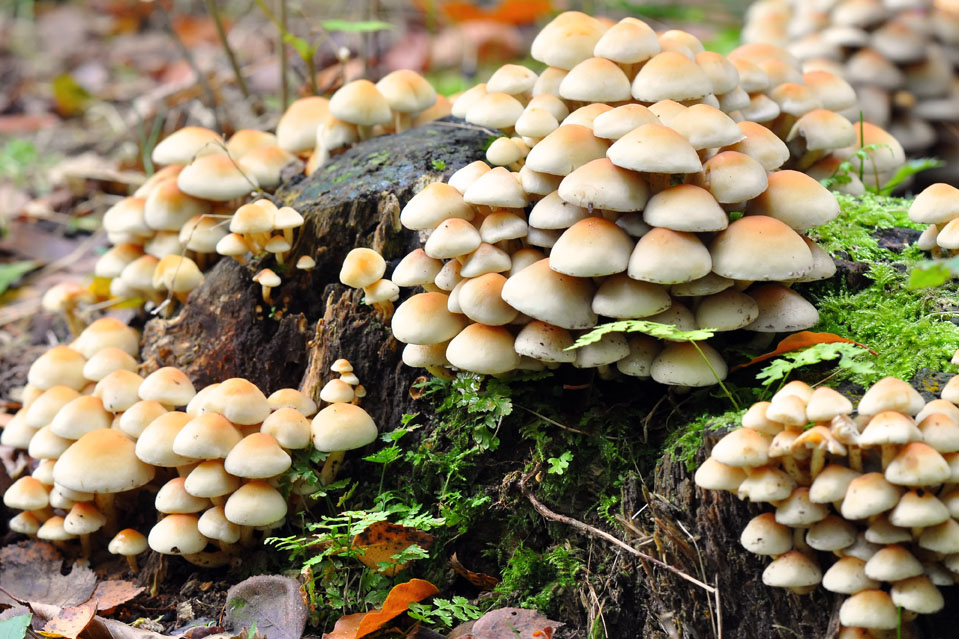Mammals
Red foxes are coming to the end of their breeding season now, so calling starts to die down and long-range movements become less frequent. Many vixens will now be pregnant and will start looking for an earth (den) in which to give birth to their cubs towards the end of the month. So, if you have any holes under your sheds or outbuildings that you don’t want a fox potentially using as a nursery, now is the time to block the entrance. Check out my Deterring Foxes article for more information.
Badgers are both breeding and having cubs at this time of year, although they prefer to mate underground so most happens away from prying eyes. The end of winter may seem a strange time to give birth, particularly given that a sow is likely to be malnourished having spent very little time out foraging if the winter was harsh. The logic is sound, however, and the cubs will appear above ground in late spring or early summer, just when food should be at its most abundant and the weather at its best. Badgers are one of very few mammals that are superfetatious, which means they can conceive while pregnant (hence, February is also still the breeding season), the resulting embryos suspended in the womb until the following winter. Badgers can carry embryos fertilised at different times of the year and yet give birth to the cubs at the same time to, hopefully, coincide with times of environmental plenty.

Some of our mammals are still in hibernation, including hedgehogs, dormice and bats. Mild weather can wake them up, perhaps lulling them into an early sense of spring, but so too can very cold conditions. If the temperature inside the hibernaculum drops below about one degree Celsius (34F) hibernating mammals are at risk of freezing to death and will leave in search of food. With this in mind, it can be hugely beneficial to continue to provide food for hedgehogs in your garden when it gets very cold. In addition, if you’re doing some gardening this month, please be aware that large piles of twigs and leaves offer ideal spots for hibernating hedgehogs. Please check any pile of garden rubbish for hedgehogs before lighting it.
February can be good for deer watching, with roe deer forming sizeable groups and feeding out in the open during winter. Roe bucks are currently in the process of re-growing their antlers. Brown hares can be seen boxing, the lack of vegetation making them easier to spot. Similarly, low vegetation during the winter makes it easier to spot many species that usually go about unnoticed, such as mice and voles or even stoats and weasels. Indeed, stoats are very active as males are out securing territories and looking for potential mates, while females are looking for suitable den sites and checking out local food supplies. For wood mice the breeding season is ramping up and they are much more active, particularly in and around garden sheds and garages during inclement weather. Males will closely follow a female, sniffing her rear and the ground over which she has walked, in a bid to gauge when she is receptive.
Birds

If you’re into birding, February is a rewarding month to brave the cold. Our lakes, reservoirs and estuaries play host to a wide range of waterfowl, including various ducks, geese and herons. Estuaries and marshes are often a draw for birds of prey, such as marsh harriers, hen harriers, short-eared owls, peregrines and even merlins, as they target the smaller bird species over-wintering there. There may still be a few great grey shrikes around, as well as large flocks of winter thrushes (including fieldfare and redwings) and finches. If you’re out for a walk in the woods, keep an ear out for the “chitterings” of the striking orangey-red crossbills as they move en masse between fir trees. While you’re among the pine trees, keep an eye out for the bright yellow siskins and chaffinch-coloured hawfinch, Britain’s largest finch. During your walk, scan any flocks of chaffinch for the odd brambling along for the ride. Snow buntings often travel in large groups during February, with their soft whistling call heard along the north and eastern coasts. Firecrests and goldcrests are also about at this time of year, and these tiny restless birds can really add a spark to a cold winter walk.
Arguably the most impressive avian display to be seen in the UK this month is the intricate courtship of the great crested grebe. These birds are relatively common in Britain nowadays, having largely recovered from decades of persecution by the Victorians, who wanted their feathers to adorn clothing. Having recently moulted into their breeding plumage, grebes will be starting to pair up during February.

Grebe courtship starts with two birds facing each other in the water, turning their heads in opposite directions and arching their heads back into their wings. The pair then line up side by side and turn their heads away from each other, each engaging in ritualistic preening. The male swims ahead of the female and stands erect in the water while the female spreads her wings in what is often referred to as a ‘butterfly-like’ posture. The birds then separate, dive, resurface with their beaks full of weed, and charge at one another, rising up face to face when they meet and splashing madly with their feet to maintain position, turning their heads in opposite directions as they shake the weed. This display can happen several times before the pair will eventually mate, and the display may break off at any stage, each bird going about its business. Interestingly, however, courtship never seems to pick up where it left off. If the pair separate after the ritualistic preening step, for example, they will start from scratch at the facing and head turning stage.
If the idea of getting out in the cold doesn’t appeal, there’s plenty of bird life to be found in gardens, with the cold weather attracting some unusual visitors. Bullfinches add a splash of colour to a grey winter day – I have noticed that when it’s very cold these normally shy and elusive birds spend more time in the garden picking up seed that has fallen out of the bird feeders. Greater spotted woodpeckers are also more prone to visit feeders during the winter, as are blackcaps, redwings and fieldfares. There are still some large murmurations of starlings about, and if you’re never experienced a flock of several thousand of these birds flying overhead, I can assure you it’s worth seeing. Finally, if you decide to take a late-night walk to listen for foxes, keep an ear open for the territorial ‘kee-wicking’ and ‘hoo-hoooing’ of tawny owls; this species is now in its breeding season.
Reptiles & amphibians
As the sun’s rays offer more warmth, snakes and lizards can be found out basking in sunny spots, even when the air temperature is in single figures. Owing to the cold, they tend to be reluctant to move even when disturbed, which can allow for some great views. Toads and newts are also likely to be holed up somewhere out of the winter weather if it’s cold, while many areas will start seeing frogspawn towards the end of the month. Frogs mate early and it is not unusual to find frogspawn in February, although much of it will be killed off by frost (see: March).
Invertebrates

During milder interludes there may be some activity from butterflies and bees. Those butterflies that overwinter as adults – such as small tortoiseshell, peacock and brimstone – are often seen among the hedgerows this month searching for the early flowers. Queen bumblebees can, metaphorically speaking, take their wings out of gear and fire their large flight muscles to generate heat that allows them to warm up sufficiently to resume activity early in the year.
There’s plenty of spider activity to be found around our houses and as things warm up their webs will become more apparent in parks and the wider countryside. Damage to plants in the garden is an indication that slugs and snails are starting to resume activity, although they may be killed off by sudden cold snaps. We should also start seeing resumption in the activity of many ground beetles amongst the leaf litter and moths by night, the pretty mottled grey pale brindled beauty being probably the best known in February.
Wood ants set about rebuilding their winter-ravaged nests this month, and seething tangles of black ant bodies can be found covering the nests as they join together in a bid to absorb as much of the sun’s warmth as possible.
Plants & fungi
Depending on local conditions, there may already be snowdrops in abundance, and this month should also see flowering alder, goat willow, lungwort, dog’s mercury, primroses, lesser celandine, crocuses and yew. Sweet violet and three-cornered garlic are other early appearances in February. Towards the end of the month, keep an eye out for the distinctive yellow horns on stout stems that signify wild daffodil, which starts to flower now.

The poisonous sulphur tuft fungi can be found sprouting from dead wood (old tree stumps and fallen branches) and some similarly-inedible polypore and twiglet fungi can also be found. For the fungi forager, February woodland can yield jelly ear, oyster mushrooms, velvet shank and a few wood blewit.